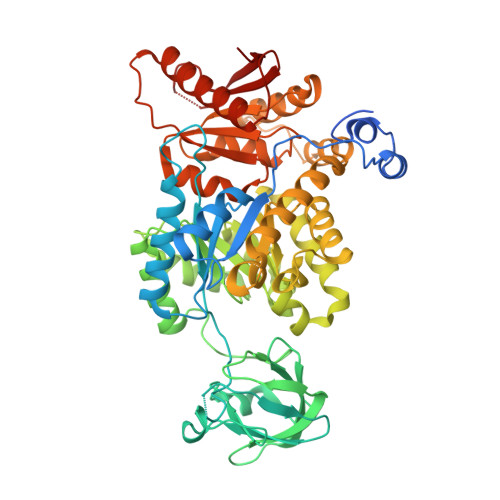Identification of residues involved in allosteric signal transmission from amino acid binding site of pyruvate kinase muscle isoform 2.
Nandi, S., Dey, M.(2023) PLoS One 18: e0282508-e0282508
- PubMed: 36897854
- DOI: https://doi.org/10.1371/journal.pone.0282508
- Primary Citation of Related Structures:
7L21 - PubMed Abstract:
PKM2 is a rate-limiting enzyme in the glycolytic process and is involved in regulating tumor proliferation. Several amino acids (AAs) such as Asn, Asp, Val, and Cys have been shown to bind to the AA binding pocket of PKM2 and modulate its oligomeric state, substrate binding affinity, and activity. Although previous studies have attributed that the main chain and side chain of bound AAs are responsible for initiating signal to regulate PKM2, the signal transduction pathway remains elusive. To identify the residues involved in signal transfer process, N70 and N75 located at two ends of a β strand connecting the active site and AA binding pocket were altered. Biochemical studies of these variants with various AA ligands (Asn, Asp, Val, and Cys), illustrate that N70 and N75, along with β1 connecting these residues are part of the signal transduction pathway between the AA binding pocket and the active site. The results demonstrate that mutation of N70 to D prevents the transfer of the inhibitory signal mediated by Val and Cys, whereas N75 to L alteration blocks the activating signal initiated by Asn and Asp. Taken together, this study confirms that N70 is one of the residues responsible for transmitting the inhibitory signal and N75 is involved in the activation signal flow.
Organizational Affiliation:
Department of Chemistry, The University of Iowa, Iowa City, IA, United States of America.


















